Soluble guanylate cyclase generation of cGMP regulates migration of MGE neurons
- PMID: 24155296
- PMCID: PMC3866415
- DOI: 10.1523/JNEUROSCI.1871-13.2013
Soluble guanylate cyclase generation of cGMP regulates migration of MGE neurons
Abstract
Here we have provided evidence that nitric oxide-cyclic GMP (NO-cGMP) signaling regulates neurite length and migration of immature neurons derived from the medial ganglionic eminence (MGE). Dlx1/2(-/-) and Lhx6(-/-) mouse mutants, which exhibit MGE interneuron migration defects, have reduced expression of the gene encoding the α subunit of a soluble guanylate cyclase (Gucy1A3). Furthermore, Dlx1/2(-/-) mouse mutants have reduced expression of NO synthase 1 (NOS1). Gucy1A3(-/-) mice have a transient reduction in cortical interneuron number. Pharmacological inhibition of soluble guanylate cyclase and NOS activity rapidly induces neurite retraction of MGE cells in vitro and in slice culture and robustly inhibits cell migration from the MGE and caudal ganglionic eminence. We provide evidence that these cellular phenotypes are mediated by activation of the Rho signaling pathway and inhibition of myosin light chain phosphatase activity.
Figures
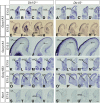


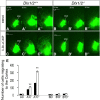
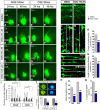
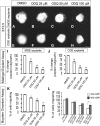
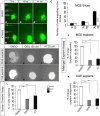


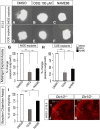
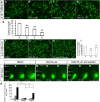

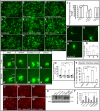

Similar articles
-
Lhx6 directly regulates Arx and CXCR7 to determine cortical interneuron fate and laminar position.Neuron. 2014 Apr 16;82(2):350-64. doi: 10.1016/j.neuron.2014.02.030. Neuron. 2014. PMID: 24742460 Free PMC article.
-
CTCF Governs the Identity and Migration of MGE-Derived Cortical Interneurons.J Neurosci. 2019 Jan 2;39(1):177-192. doi: 10.1523/JNEUROSCI.3496-17.2018. Epub 2018 Oct 30. J Neurosci. 2019. PMID: 30377227 Free PMC article.
-
Sp9 Regulates Medial Ganglionic Eminence-Derived Cortical Interneuron Development.Cereb Cortex. 2019 Jun 1;29(6):2653-2667. doi: 10.1093/cercor/bhy133. Cereb Cortex. 2019. PMID: 29878134 Free PMC article.
-
The development of MGE-derived cortical interneurons: An Lhx6 tale.Int J Dev Biol. 2022;66(1-2-3):43-49. doi: 10.1387/ijdb.210185md. Int J Dev Biol. 2022. PMID: 34881792 Review.
-
Role of the nitric oxide-soluble guanylyl cyclase pathway in obstructive airway diseases.Pulm Pharmacol Ther. 2014 Oct;29(1):1-6. doi: 10.1016/j.pupt.2014.07.004. Epub 2014 Jul 17. Pulm Pharmacol Ther. 2014. PMID: 25043200 Review.
Cited by
-
CXCL12 targets the primary cilium cAMP/cGMP ratio to regulate cell polarity during migration.Nat Commun. 2023 Dec 4;14(1):8003. doi: 10.1038/s41467-023-43645-w. Nat Commun. 2023. PMID: 38049397 Free PMC article.
-
CO and NO Coordinate Developmental Neuron Migration.Int J Mol Sci. 2025 Aug 12;26(16):7783. doi: 10.3390/ijms26167783. Int J Mol Sci. 2025. PMID: 40869105 Free PMC article.
-
DLX genes and proteins in mammalian forebrain development.Development. 2024 Jun 1;151(11):dev202684. doi: 10.1242/dev.202684. Epub 2024 May 31. Development. 2024. PMID: 38819455 Free PMC article. Review.
-
MicroRNAs in the axon locally mediate the effects of chondroitin sulfate proteoglycans and cGMP on axonal growth.Dev Neurobiol. 2015 Dec;75(12):1402-19. doi: 10.1002/dneu.22292. Epub 2015 Jun 24. Dev Neurobiol. 2015. PMID: 25788427 Free PMC article.
-
Dlx1 and Dlx2 Promote Interneuron GABA Synthesis, Synaptogenesis, and Dendritogenesis.Cereb Cortex. 2018 Nov 1;28(11):3797-3815. doi: 10.1093/cercor/bhx241. Cereb Cortex. 2018. PMID: 29028947 Free PMC article.
References
Publication types
MeSH terms
Substances
Grants and funding
LinkOut - more resources
Full Text Sources
Other Literature Sources
Molecular Biology Databases
